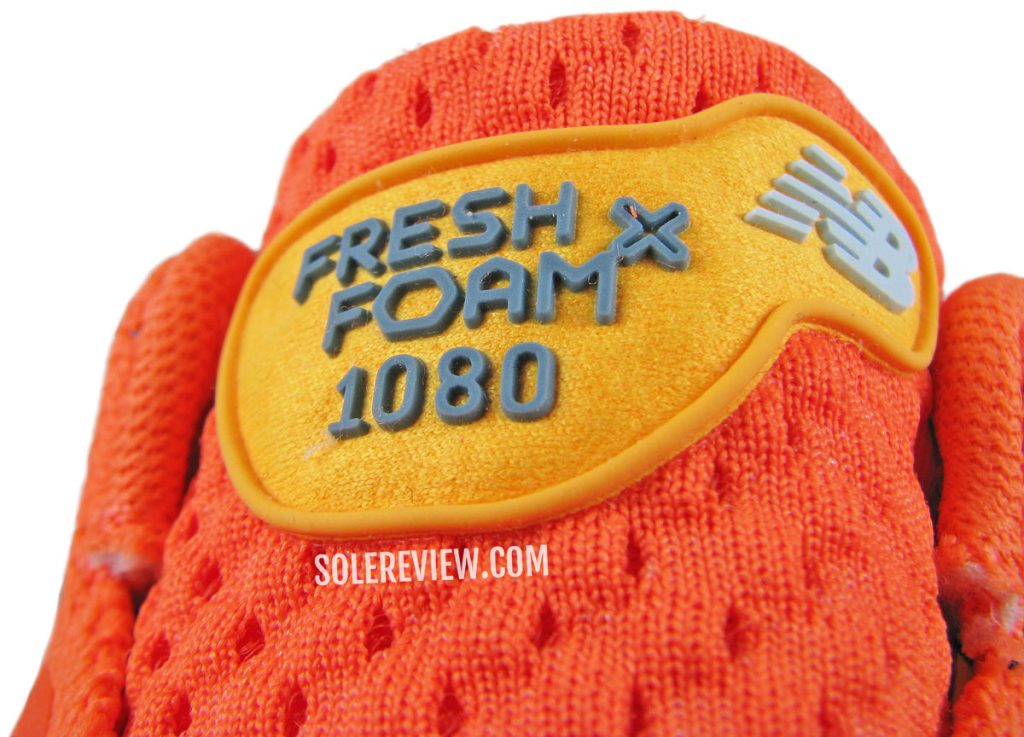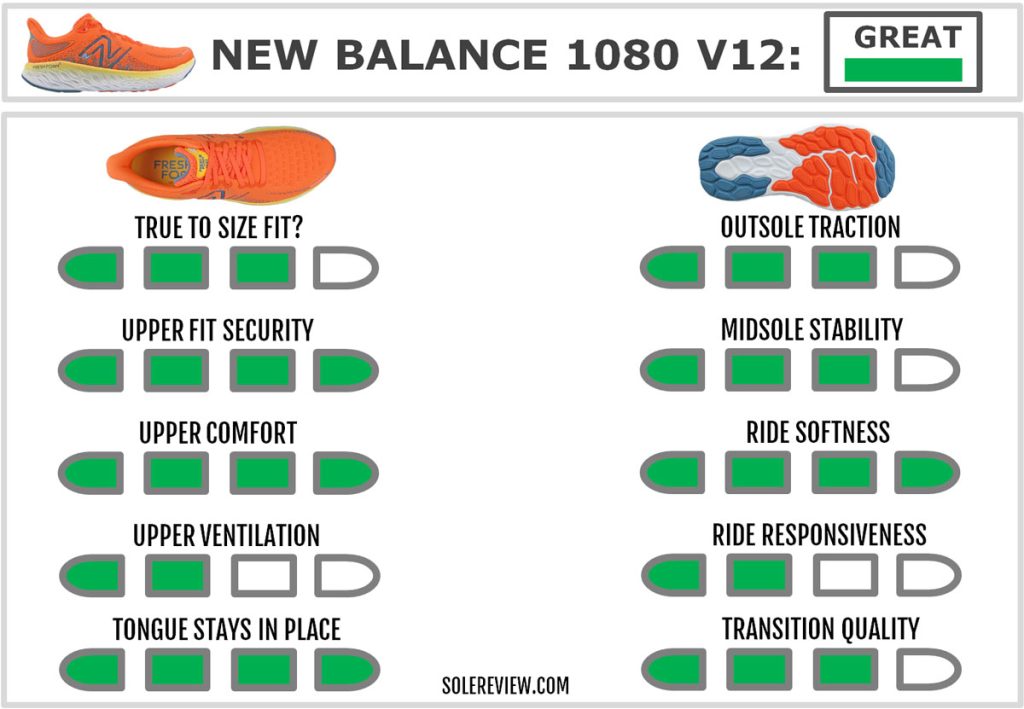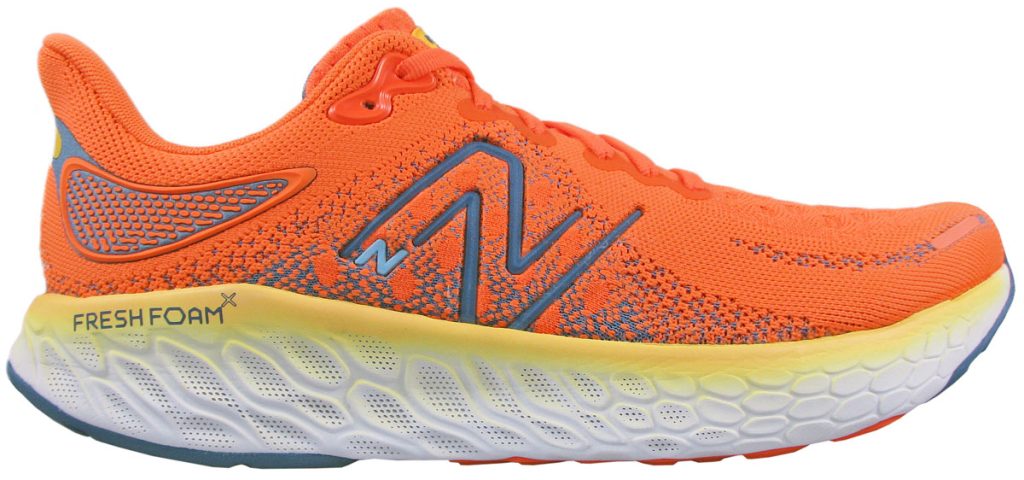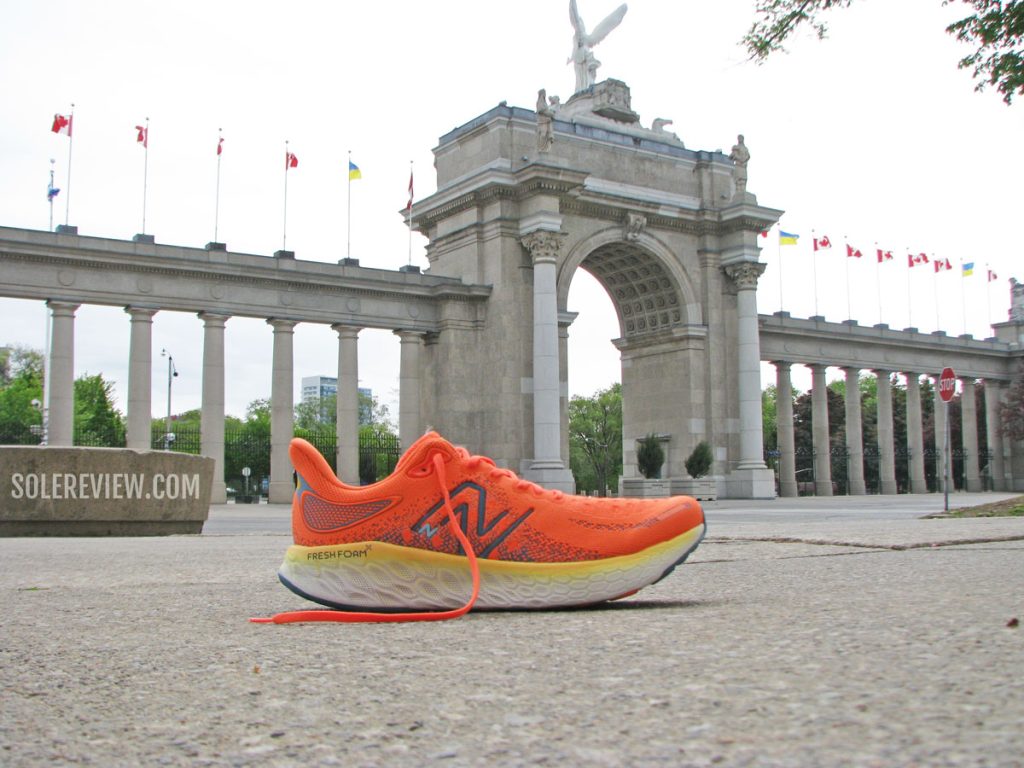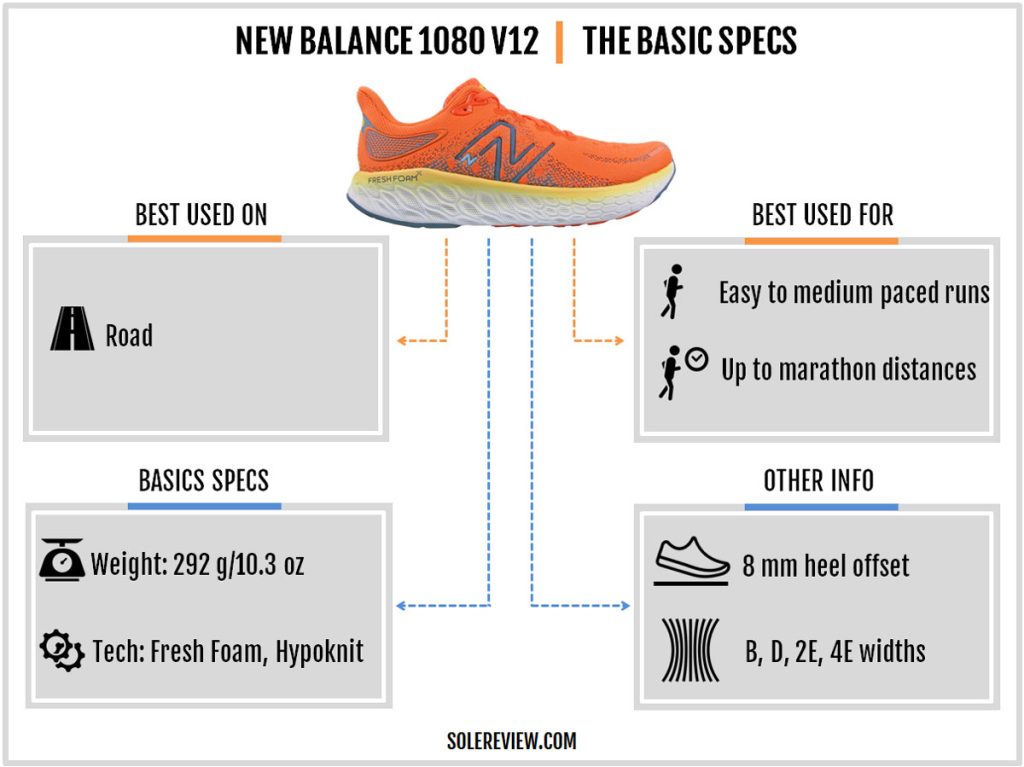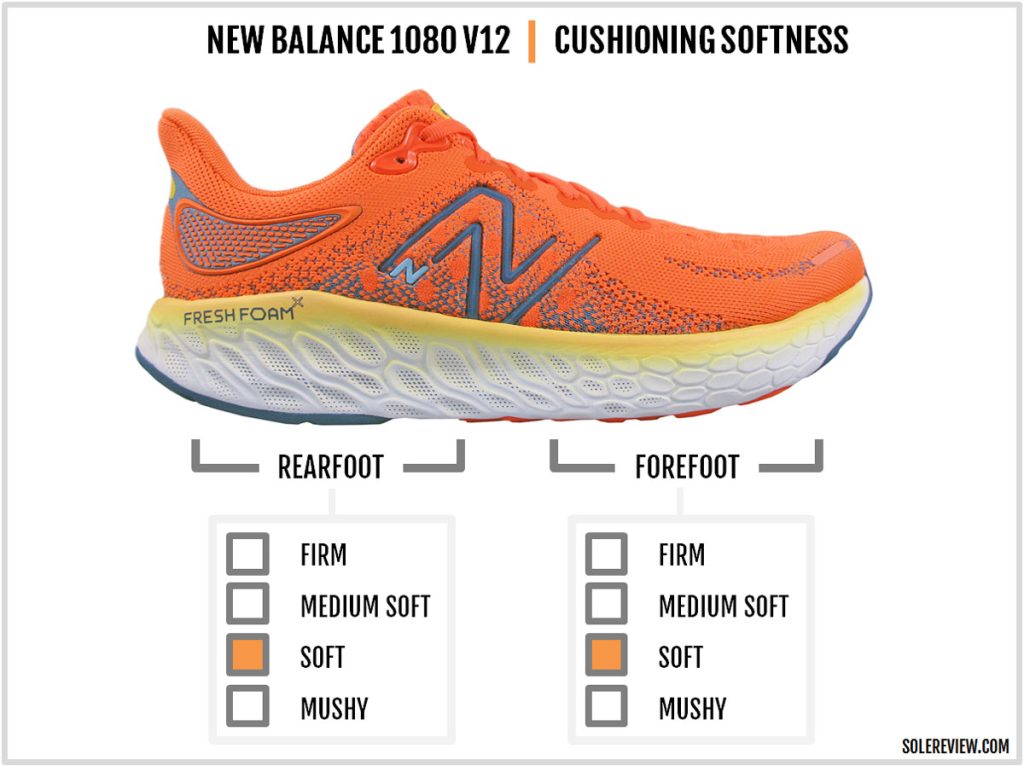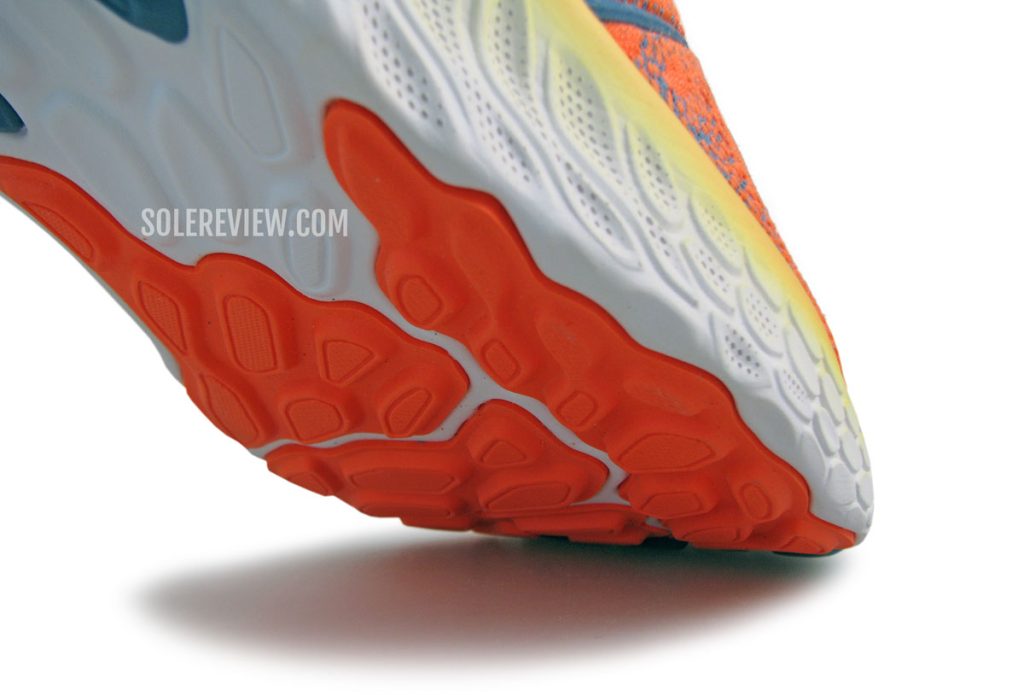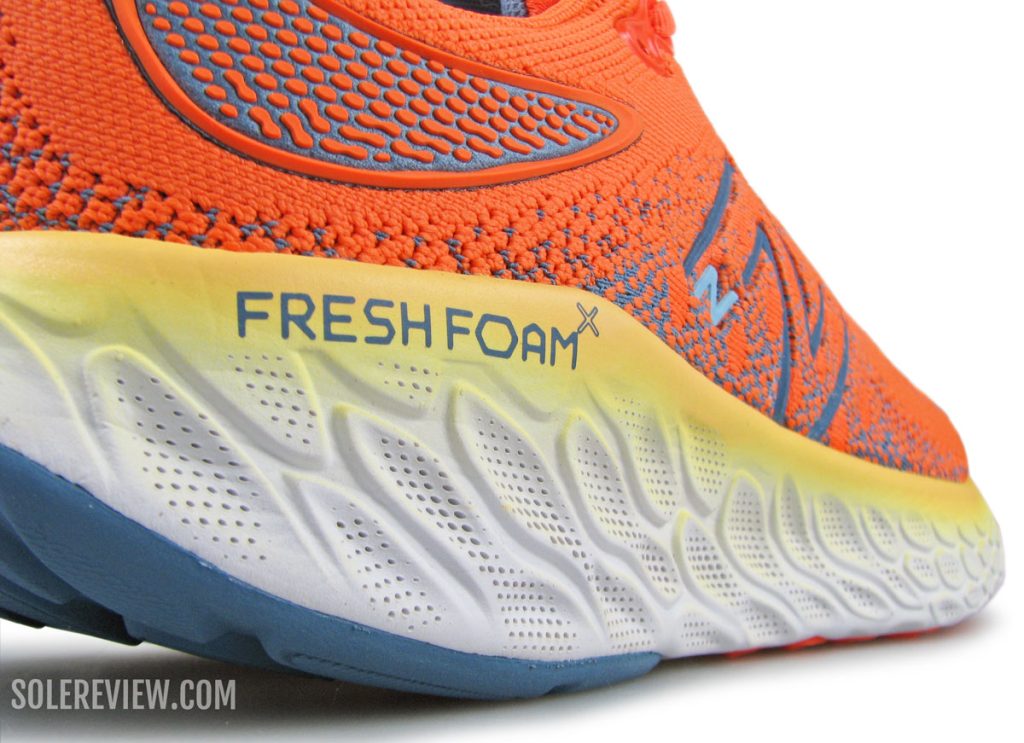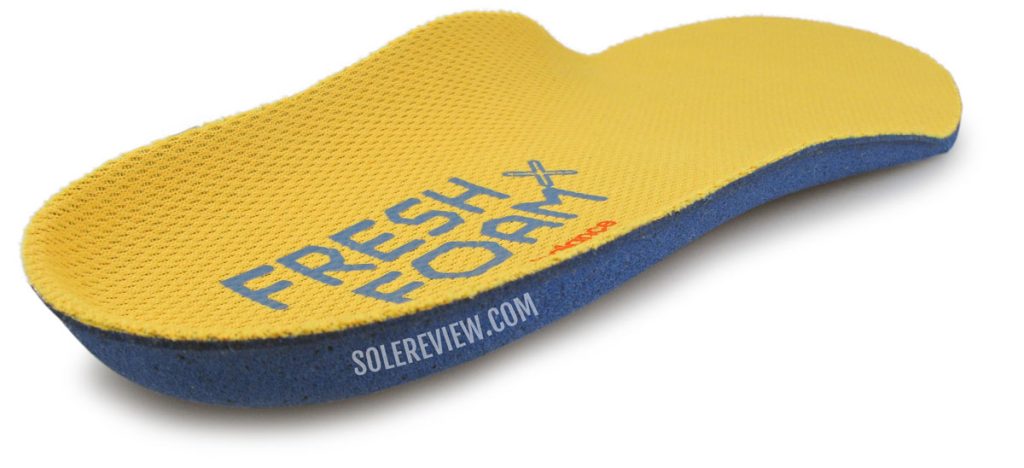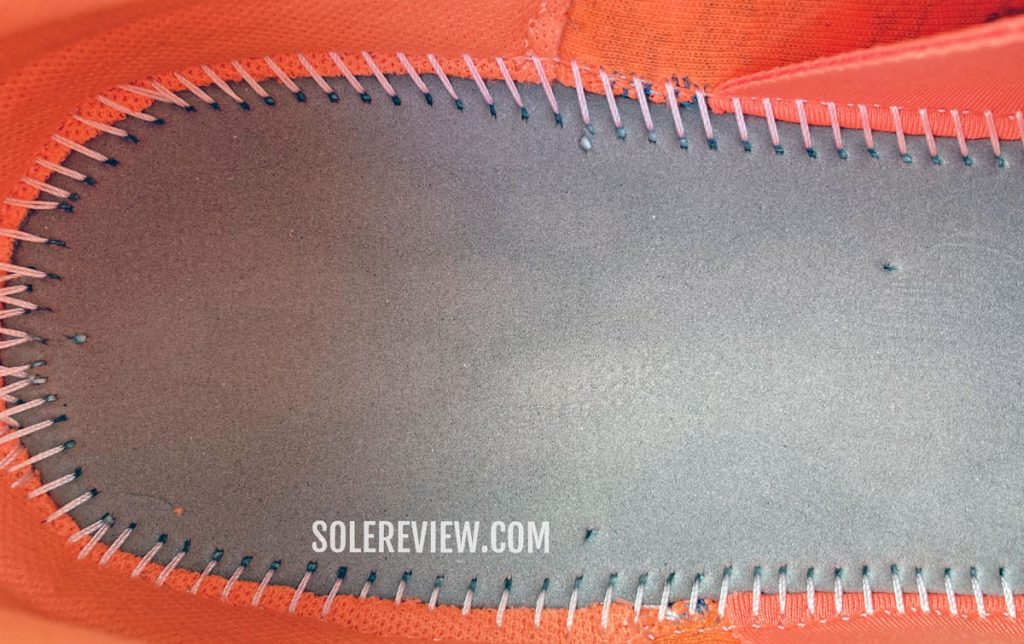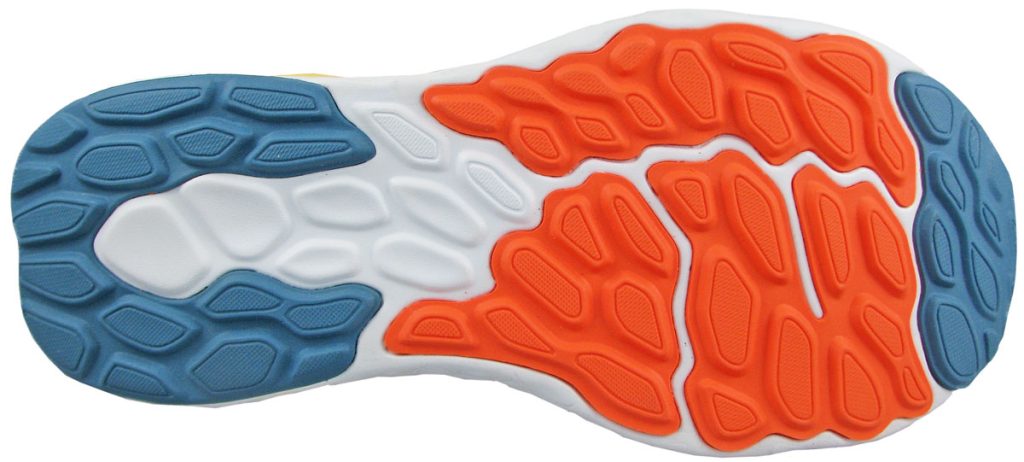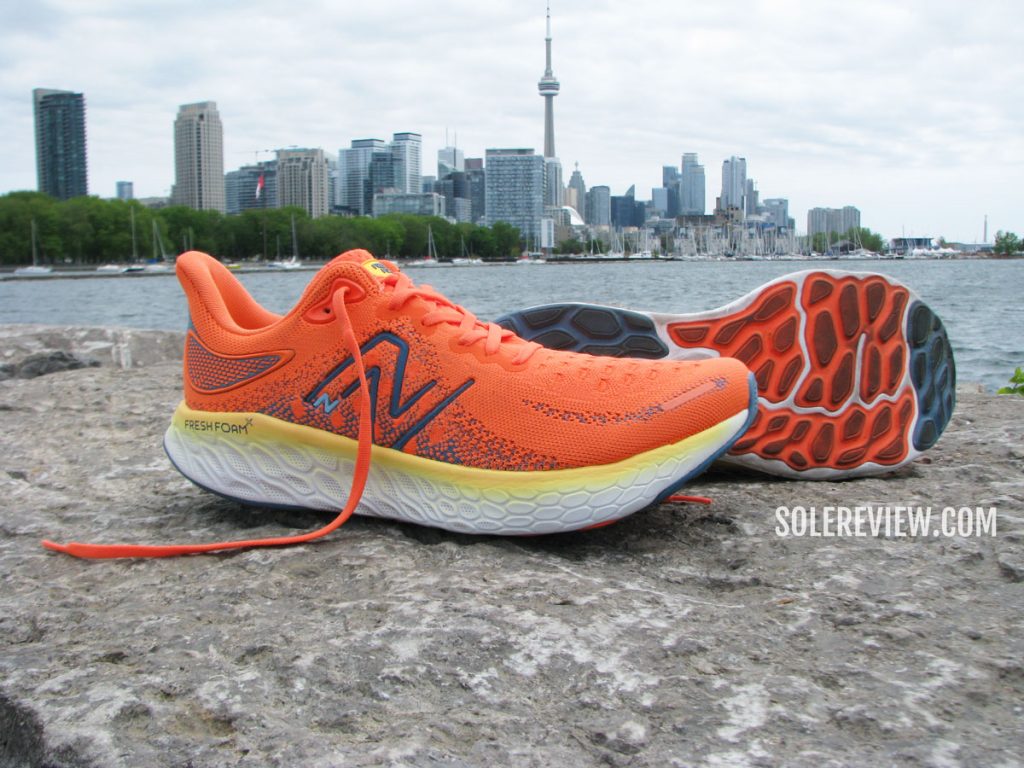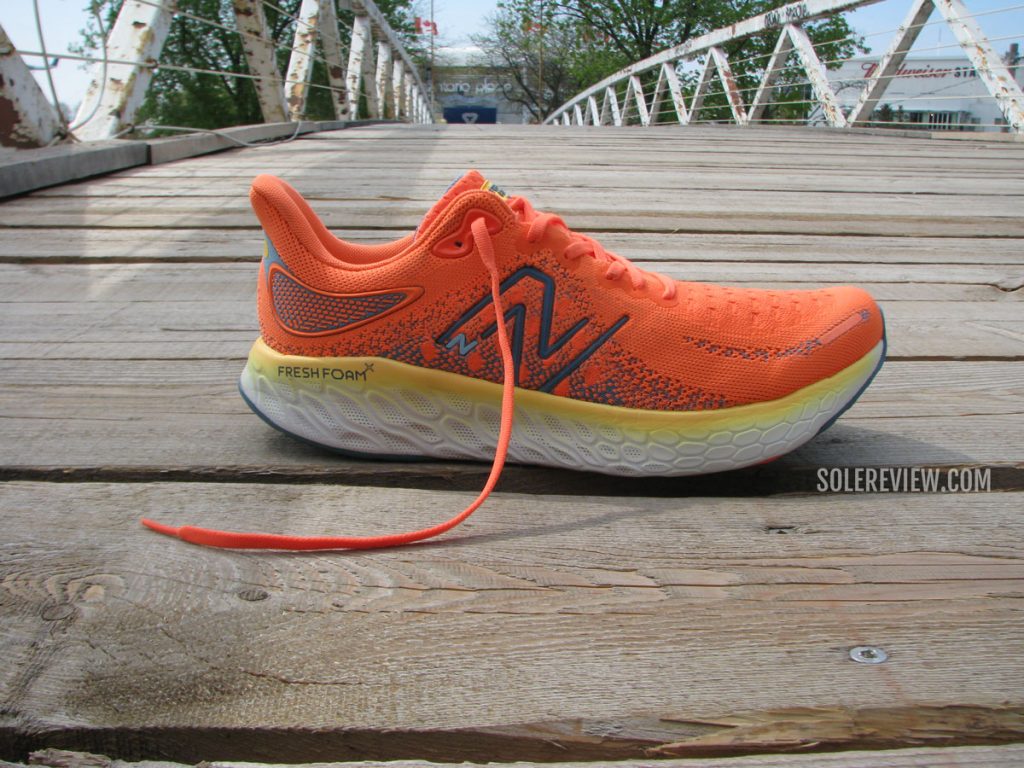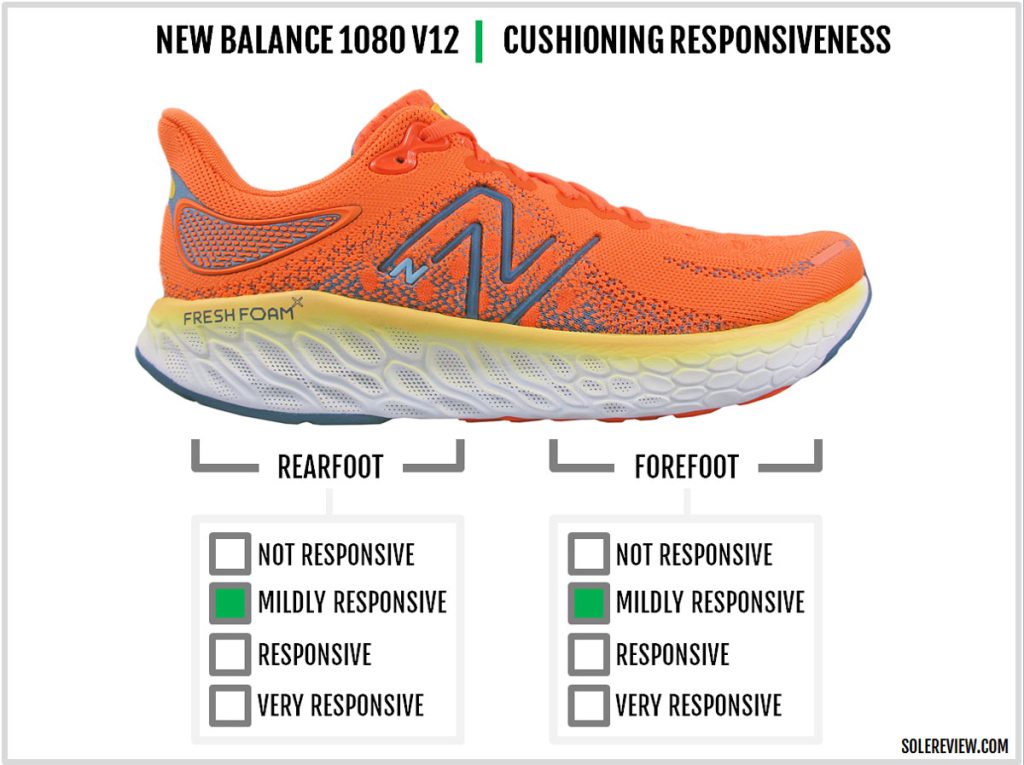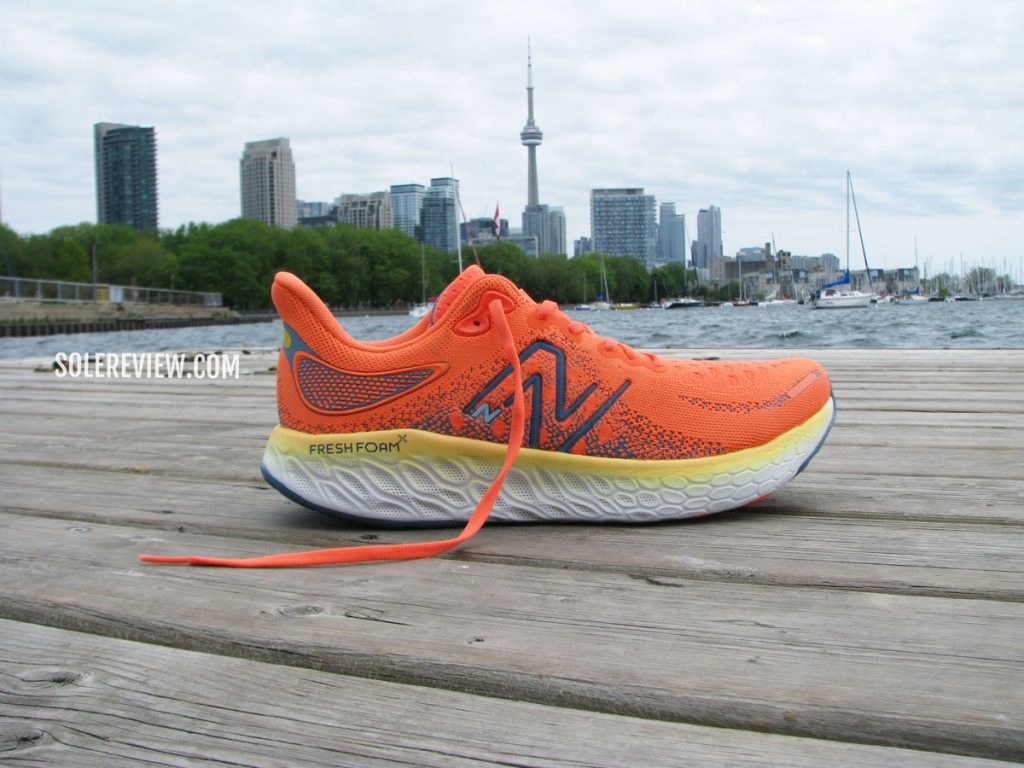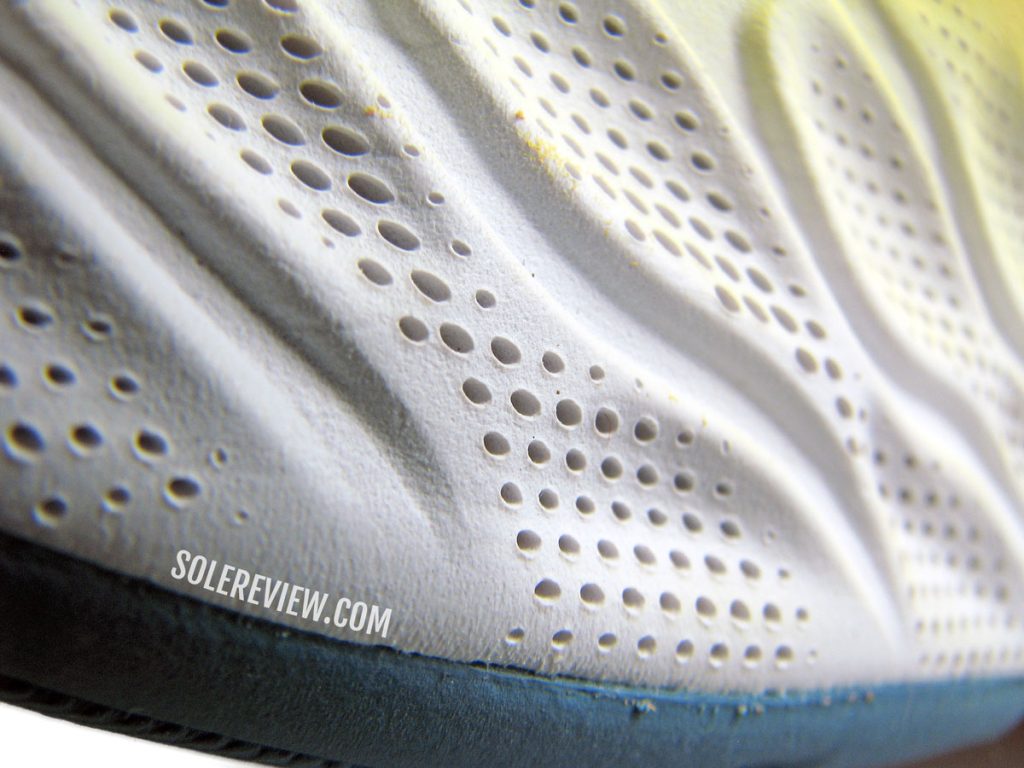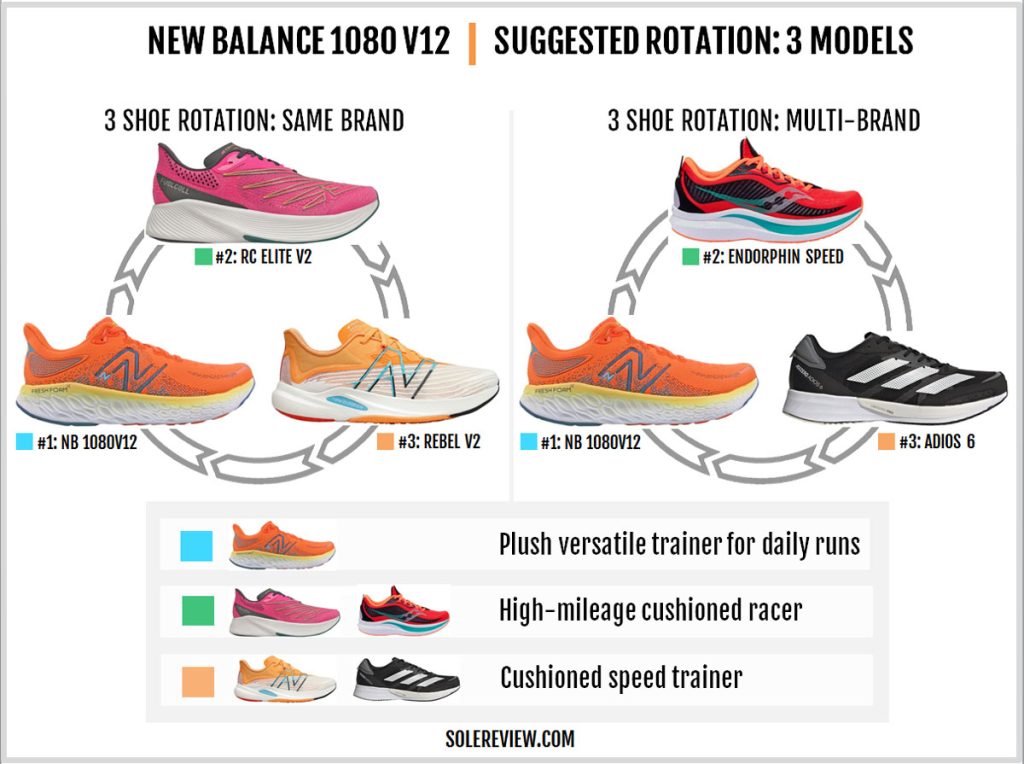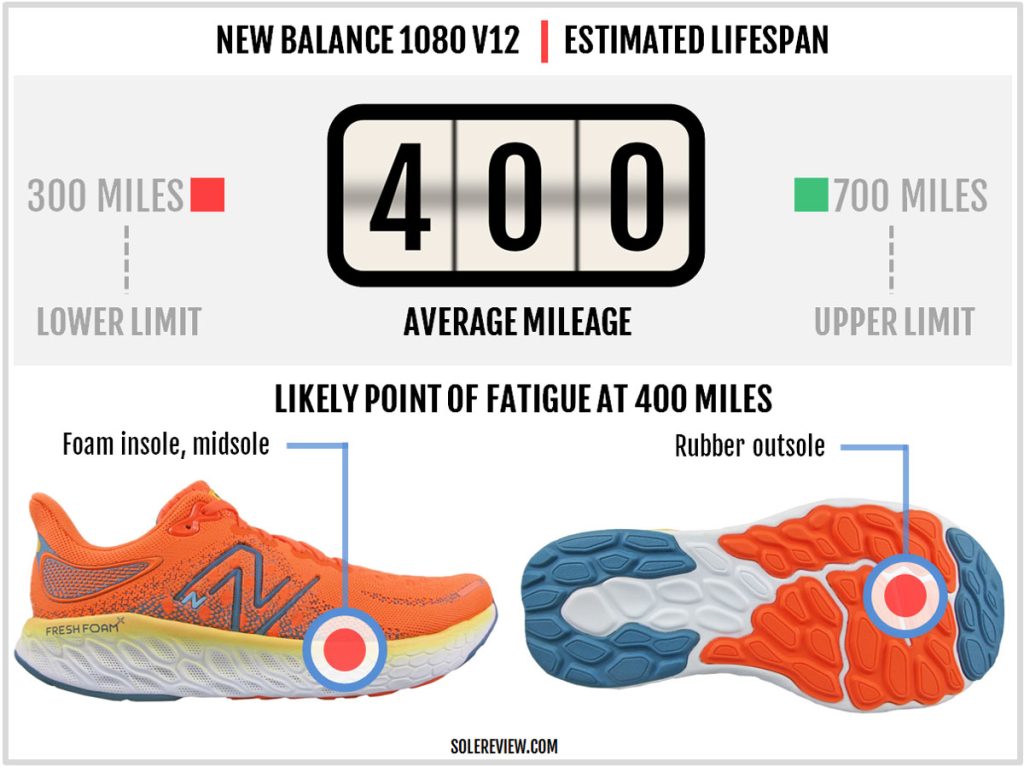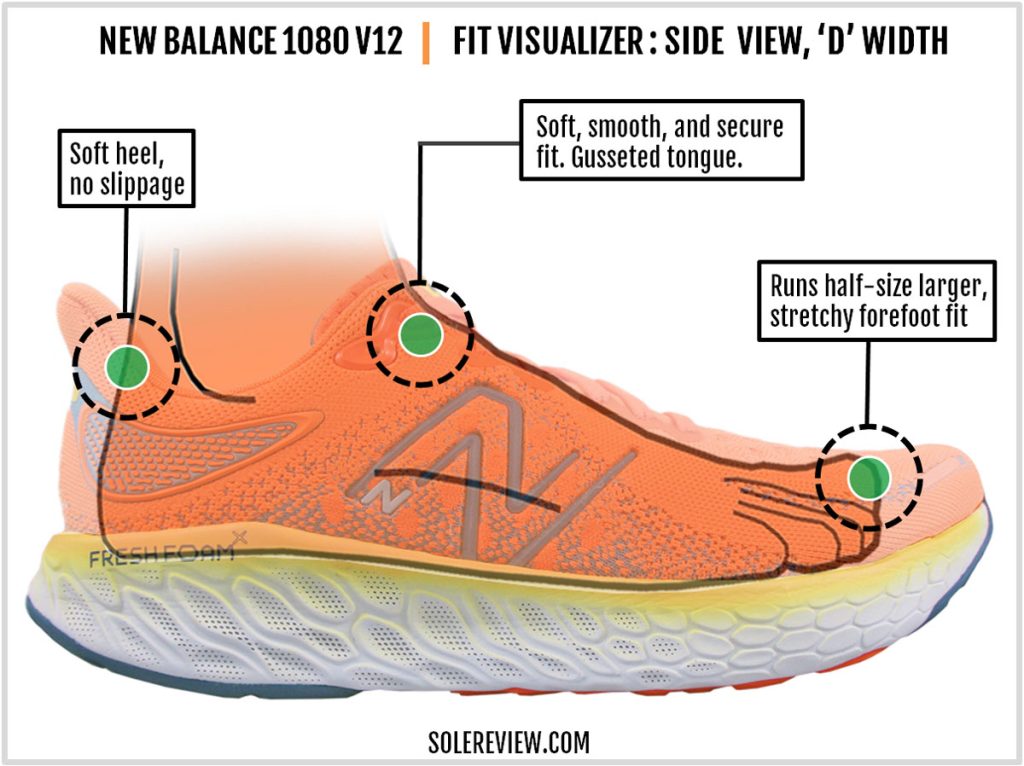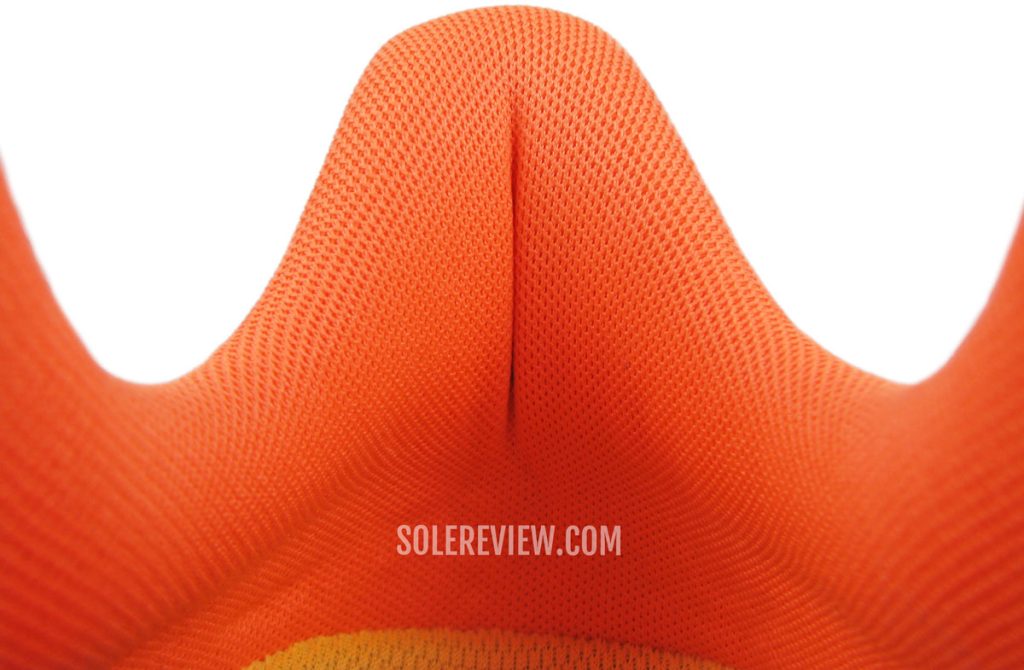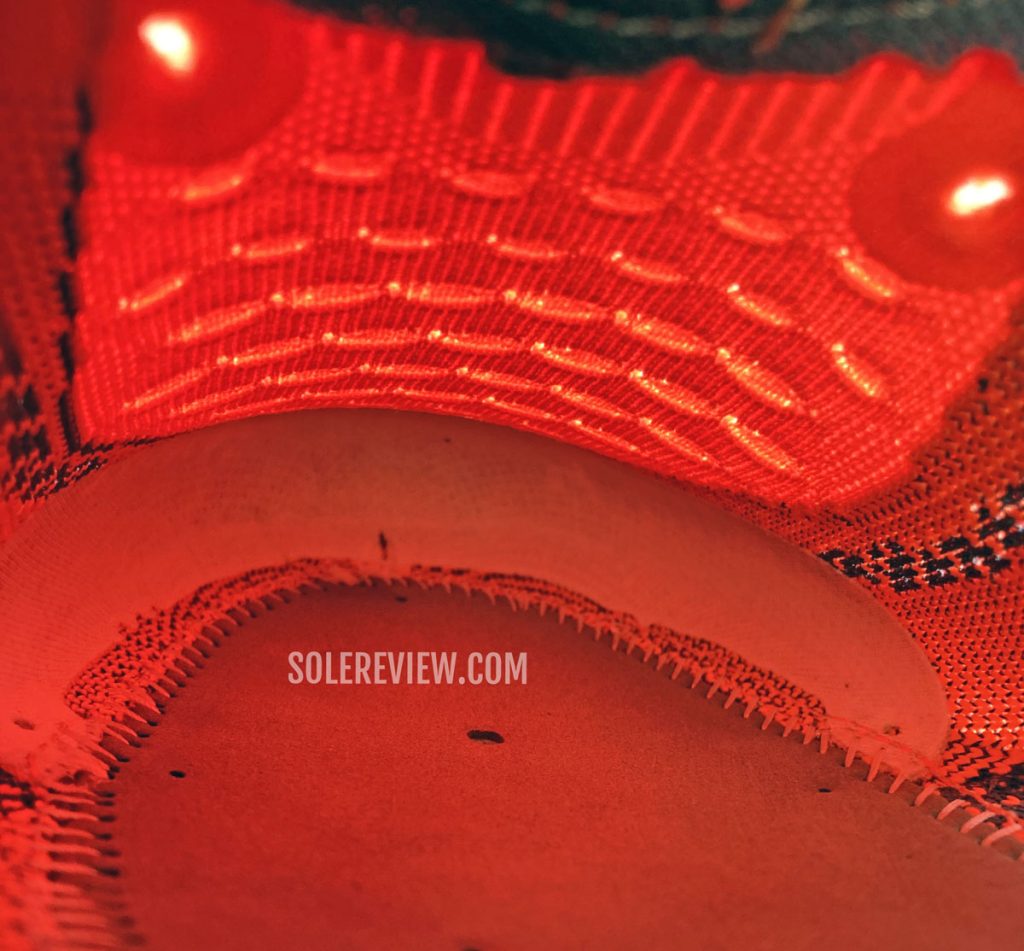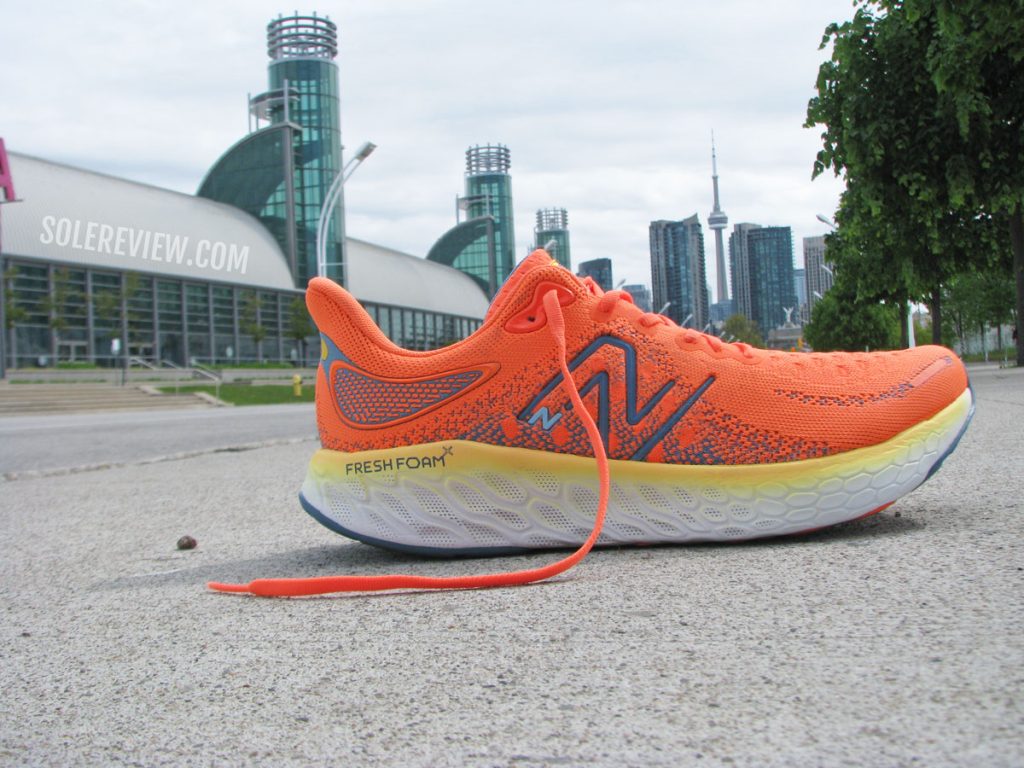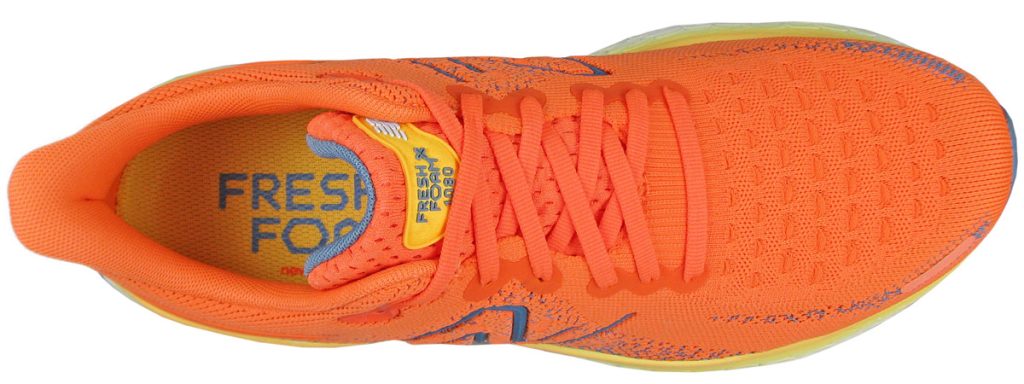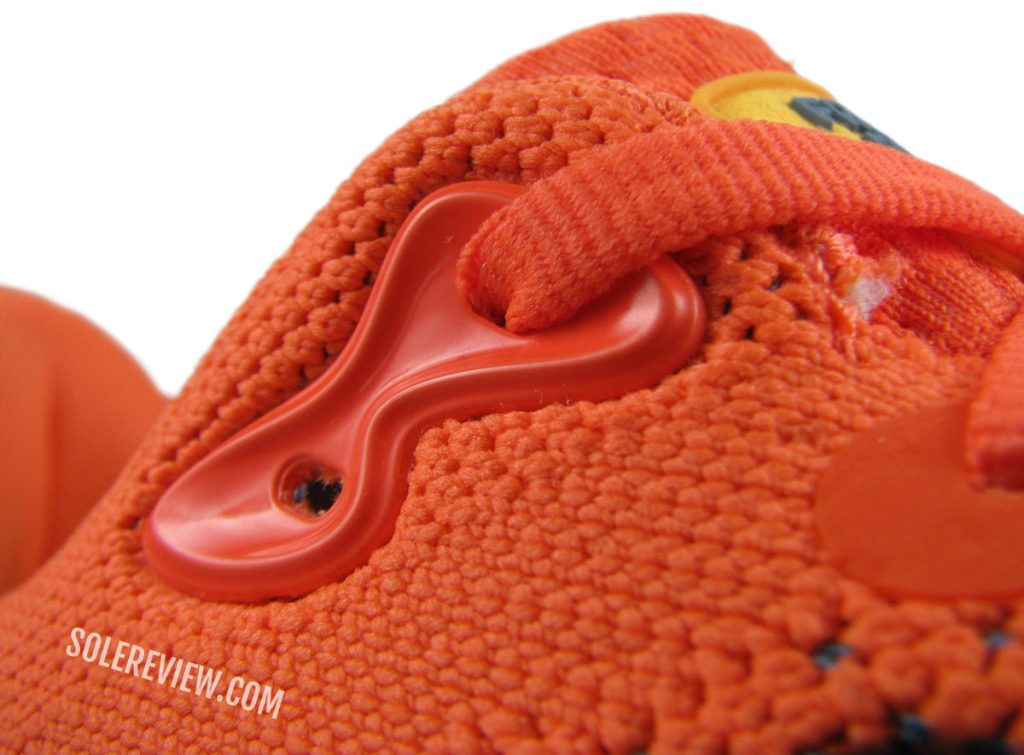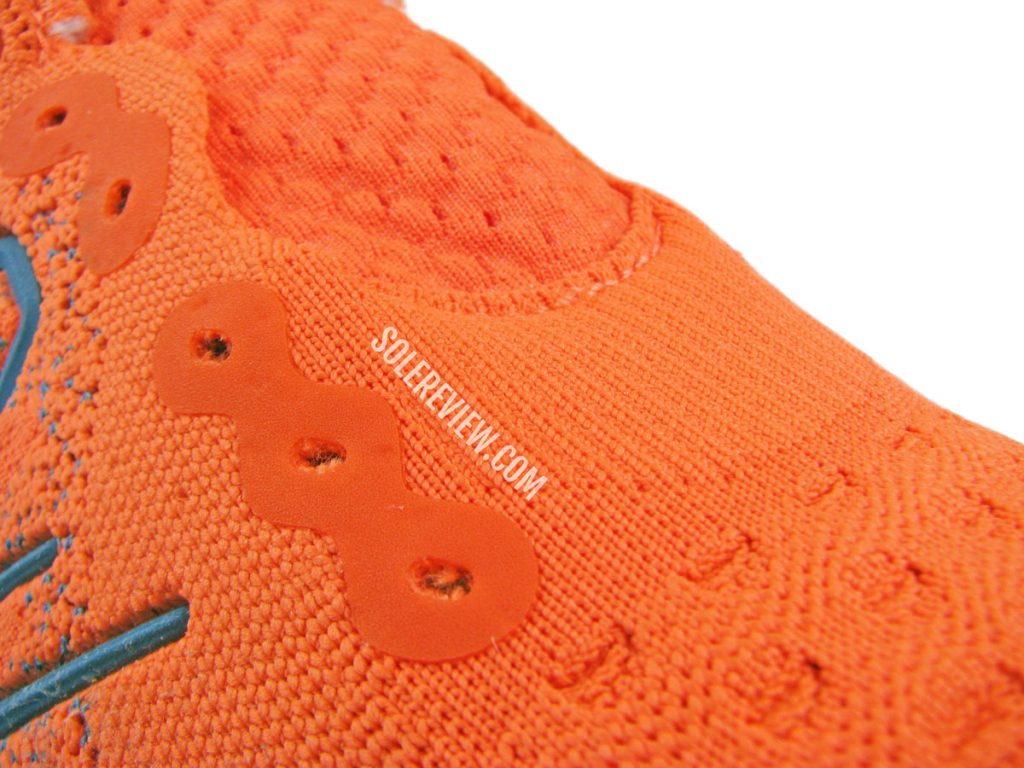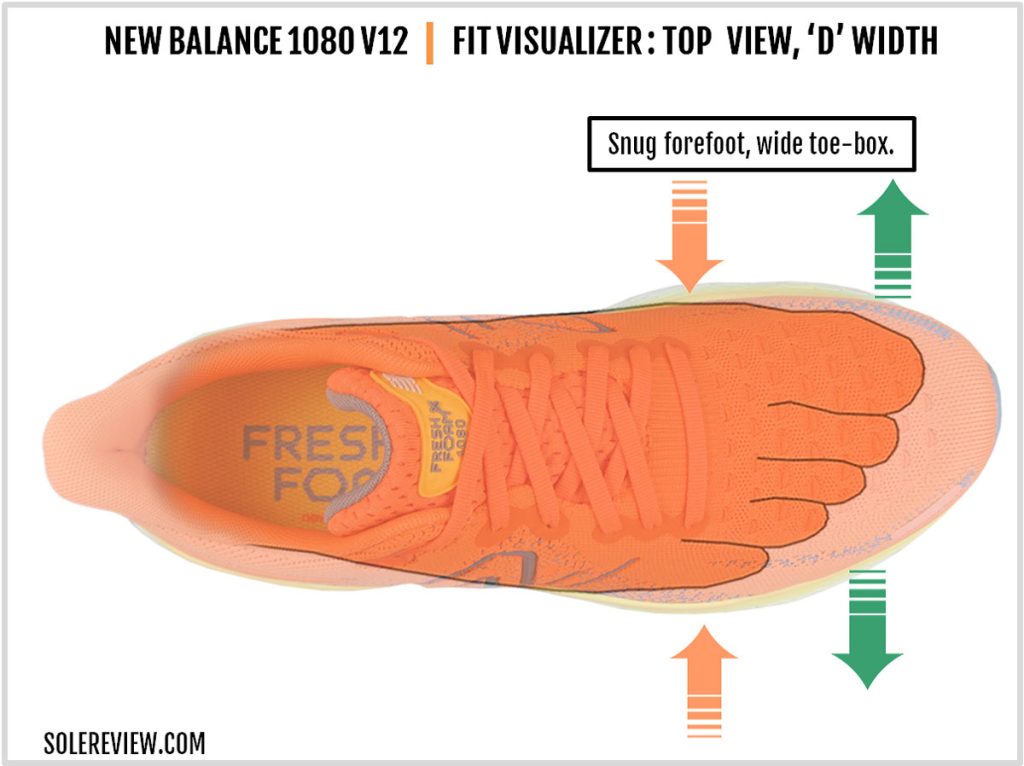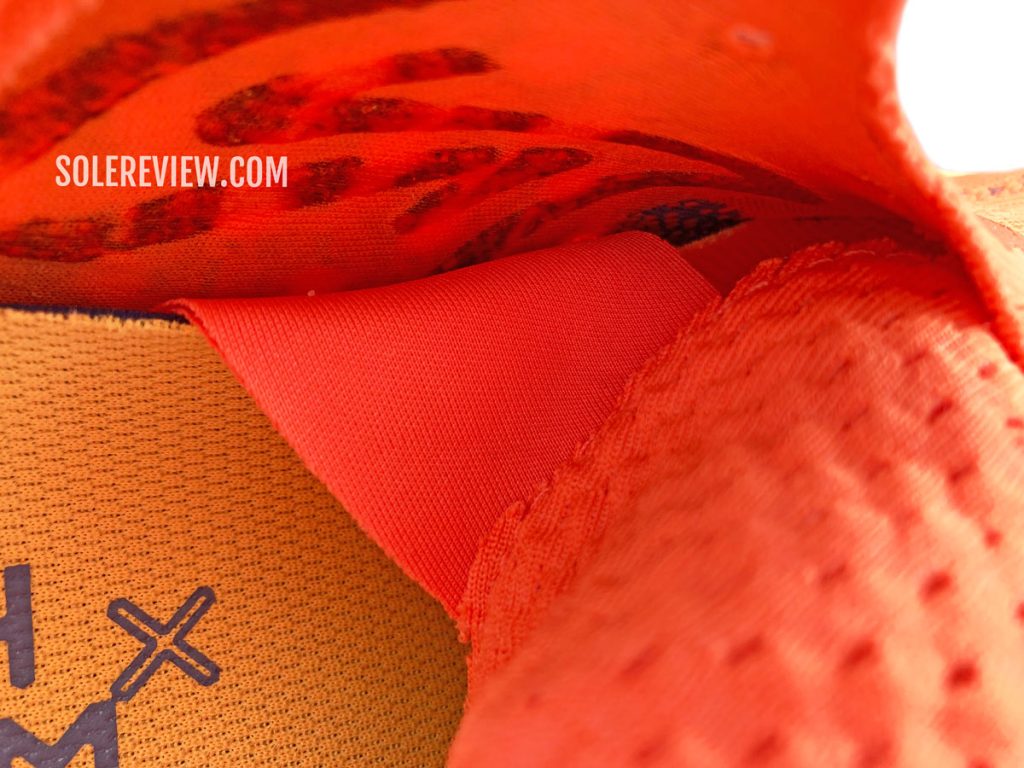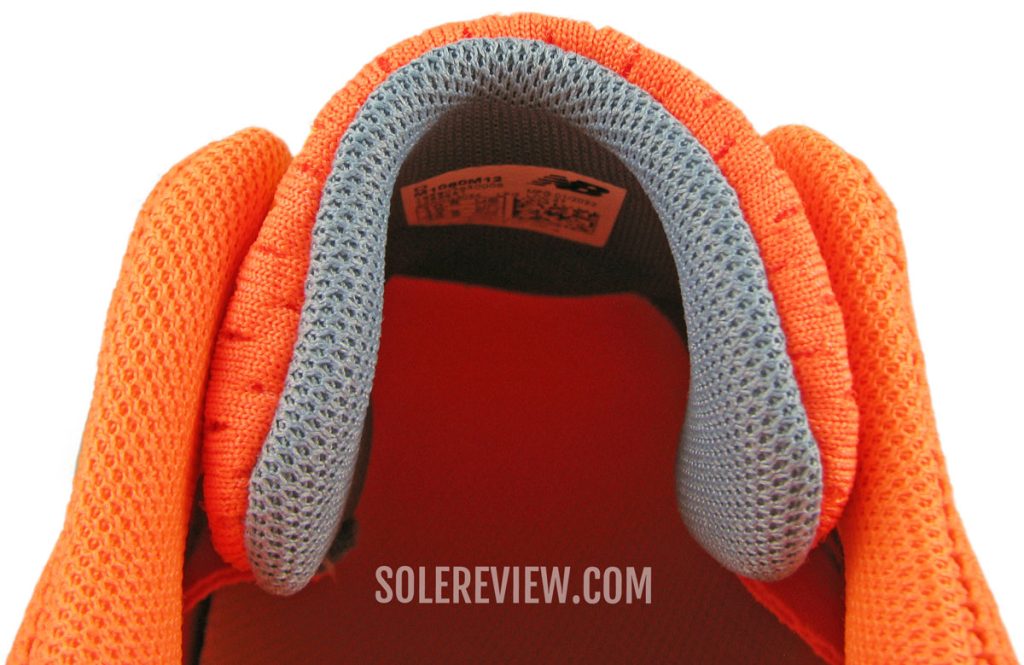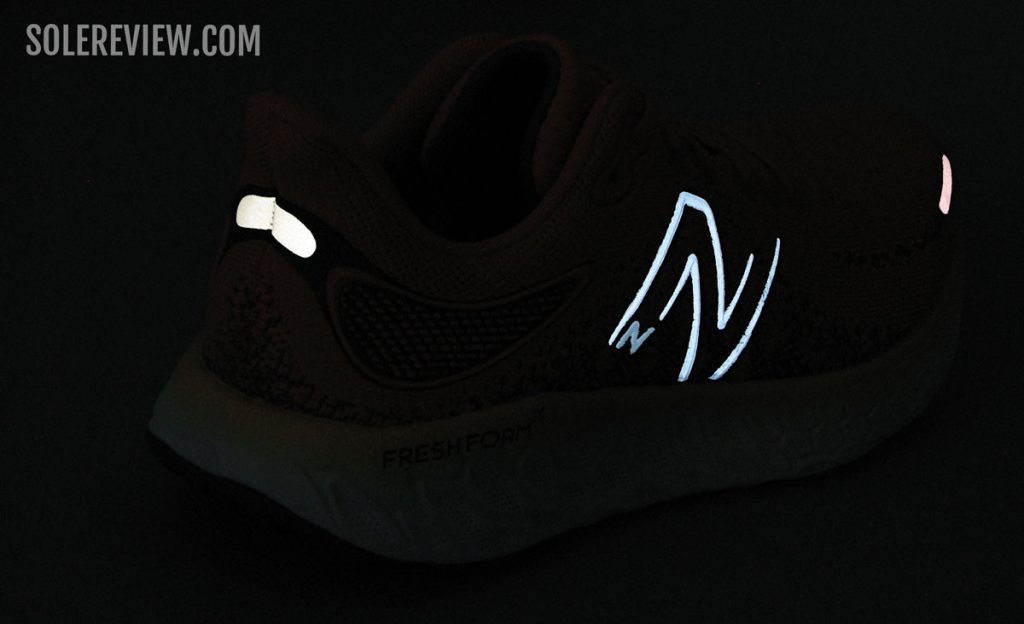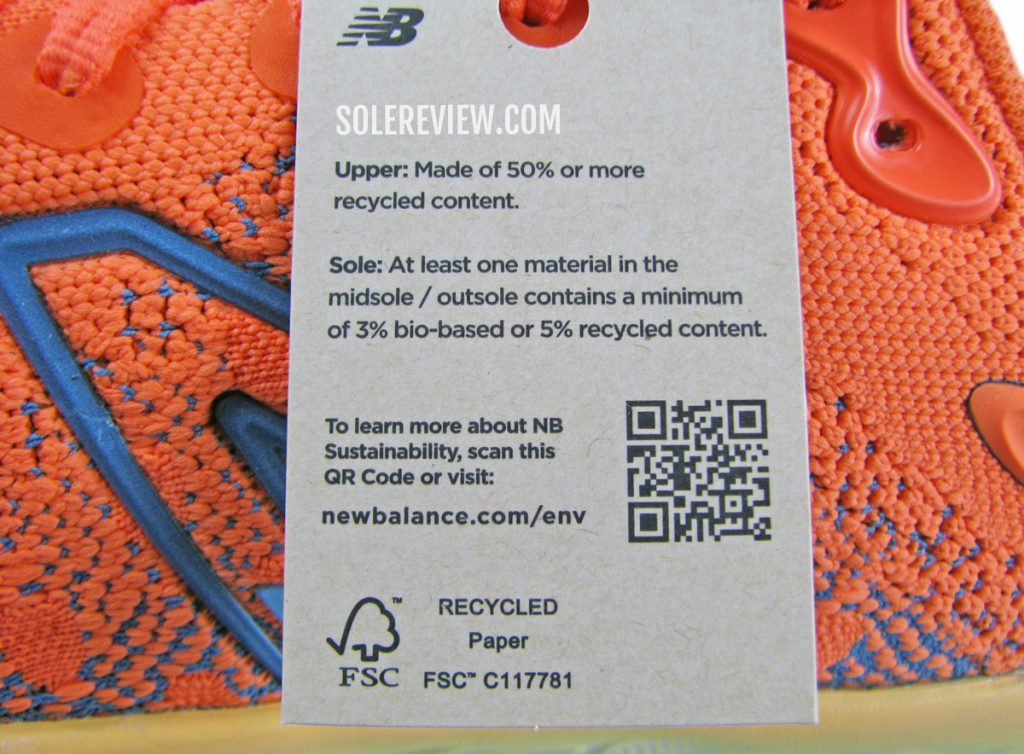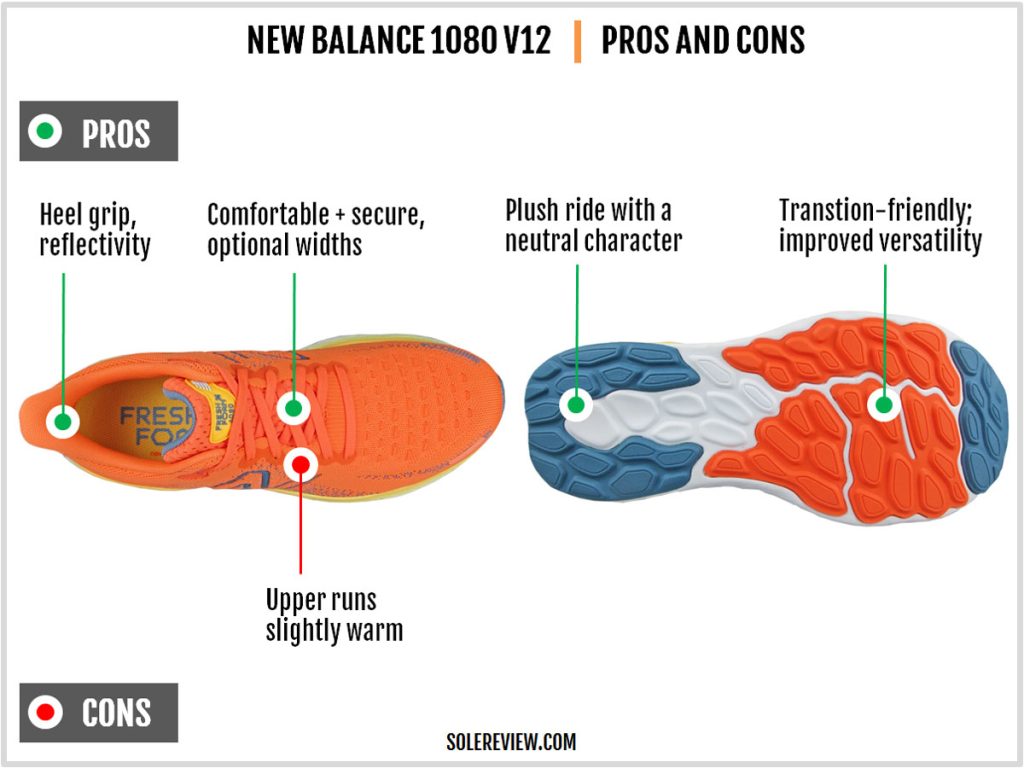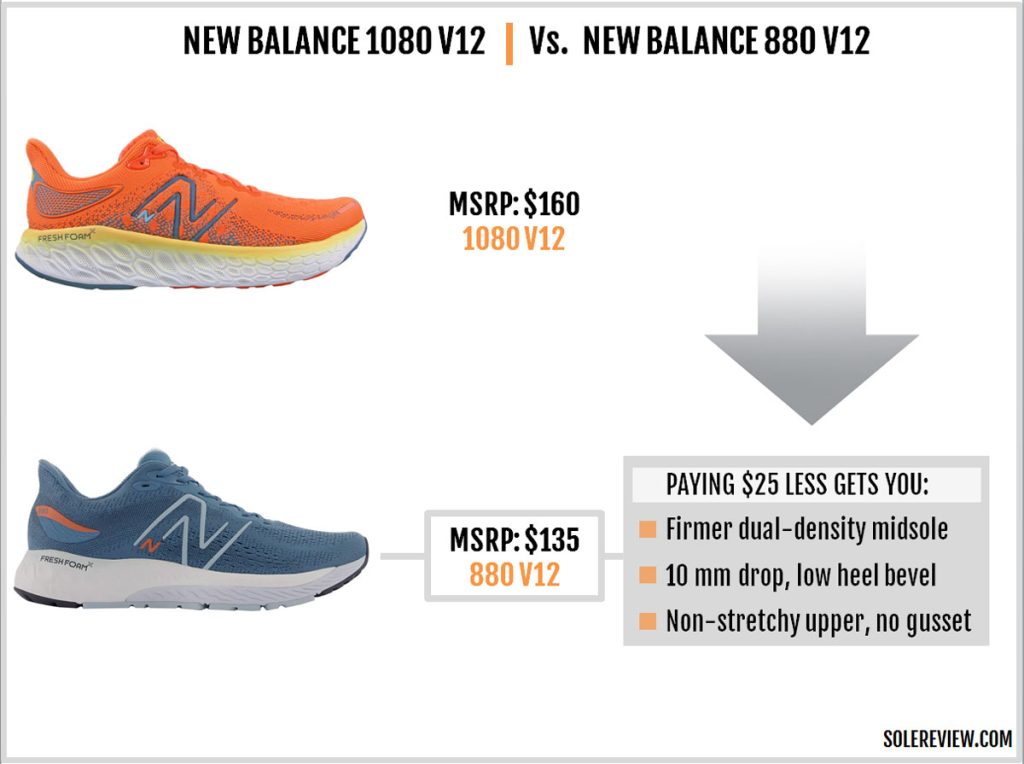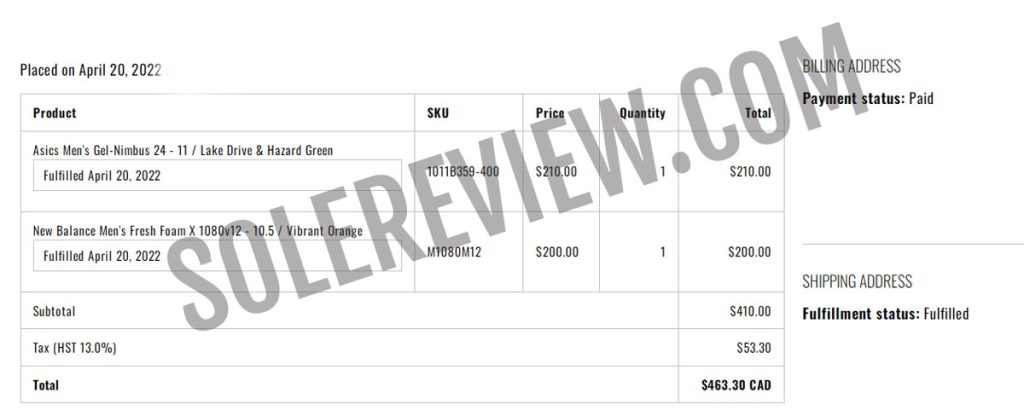
The New Balance Fresh Foam X 1080 V12 was purchased at full retail price for our review. The amount is in Canadian Dollars.
In this review:
INTRODUCTION
The New Balance 1080 V12 is a great example of running shoe evolution done right, but the process wasn’t without its fair share of hiccups.
Six years ago, New Balance made a bold move by transitioning the 1080 series to the ‘Fresh Foam’ platform.
The design makeover was bold because the previous version – namely the 1080V5 – was a traditional, albeit tech-heavy running shoe with Nitrogen-infused bits. It was a formula that had successfully worked for a very long time, so abandoning a tried-and-tested model was risky, to say the least.
We didn’t have a high opinion of the first Fresh Foam 1080 (which was the V6), nor the V7 that arrived in the following year. Our reviews made no attempt to disguise our thoughts on the new breed of 1080s – they were disappointedly ordinary.
For a very long time, ‘Fresh Foam’ glorified EVA foam that was molded in a fancy shape. Things started looking up a couple of years ago with the 1080 V9, when the shoe finally began delivering on what was originally promised – a plush ride with high-mileage comfort.
Though the 1080 V10 and V11 weren’t perfect, the midsole and upper refinements were noticeable. For example, while the 1080V11’s ride quality and soft toe-box were excellent, the Origami-type heel cup wasn’t very good at its job. The heel cup also made the midfoot panel stiff over the last two eyelets.
We’re happy to report that the New Balance 1080V12’s redesigned upper addresses both those concerns.
The upper is extremely comfortable; so much so that you can even go sockless.
The new Fresh Foam X midsole also feels more lively than any of the previous models. It helps to know that the foam is an EVA foam blend and not the Fuelcell compound that’s used on the RC Elite and Rebel.
The final product is a neutral cushioned trainer that’s extremely good at what it does. The 1080’s Fresh Foam midsole offers ample ride comfort for long-distance runs, and doesn’t feel slow while at it. The rocker-shaped midsole and resilient foam have been fine-tuned to enable quick turnovers.
The 1080 V12 is proof that the whole is greater than the sum of its parts, and you don’t need a super-foam or Carbon plate to produce running shoe excellence.
THE MIDSOLE DESIGN AND RIDE EXPERIENCE
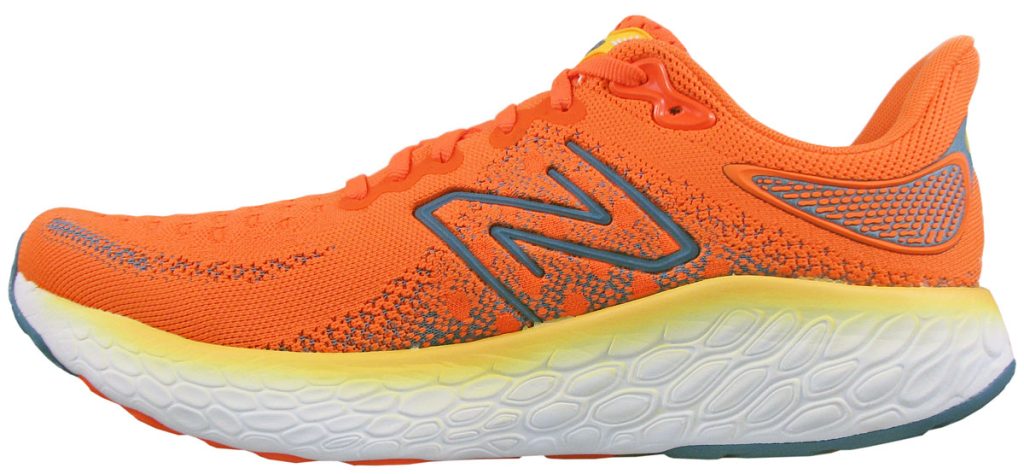
While the design tweaks are small, they contribute significantly to the 1080V12’s overall character.
The more you run in the 1080 V12, the more it grows on you.
If we had to describe the 1080’s cushioning formula based on competing cushioned trainers, we’d say it is 40% Hoka Bondi 7, 40% Hoka Clifton 8, and 20% Asics Novablast.
In other words, the midsole has a transition-friendly pep that doesn’t feel as nimble as the Asics Novablast, but it’s quicker than the Hoka Bondi 7. At the same time, the Fresh Foam X stack is more comfortable than the Clifton, yet not as deeply cushioned as the Bondi 7.
It’s as if New Balance took all the nice bits from the aforementioned products and blended them to create the 1080V12.
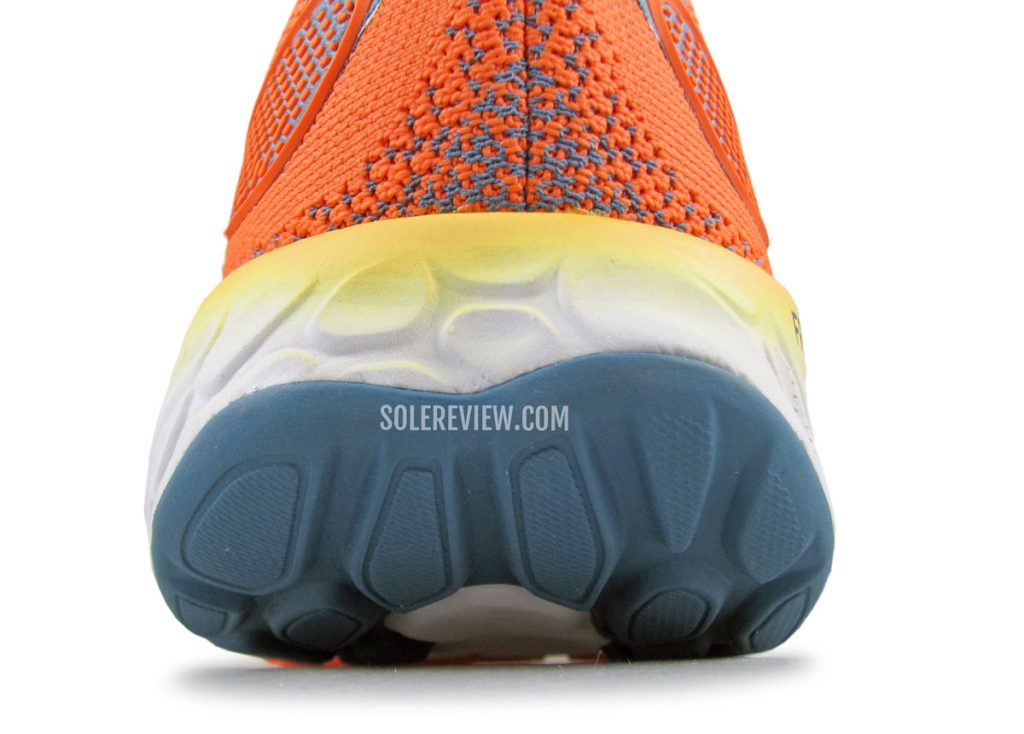
The heel has a generous bevel for smooth transitions and compatibility with different footstrike patterns.
The soft midsole is brimming with ride comfort, but it never feels mushy or unstable. The rocker profile of the 8mm drop midsole has a high toe spring and beveled rearfoot, and that makes it easier to make full-contact landings (aka forefoot/midfoot striking).
That’s not the only performance advantage that the 1080 V12’s midsole delivers. The rocker shape leads to quick turnovers, so the foot doesn’t dwell too long on the midsole.
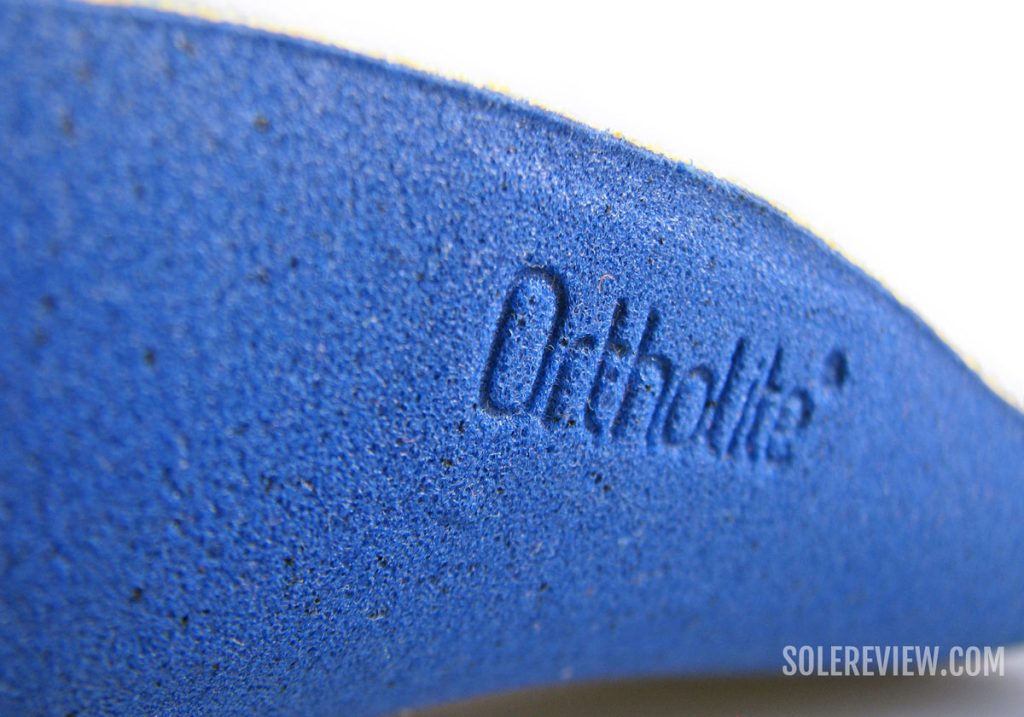
Ortholite insoles have been a regular fixture in New Balance running shoes for as long as we can remember.
Even with the generous amount of foam-based cushioning, it’s perfectly possible to consistently maintain 5 min/km (8 min/mile) paces without struggling to power through. Naturally, the 1080 also feels at home during slower paces over longer distances.
Additional layers of cushioning softness are produced by the Ortholite insole and the foam lasting under it.
Its sweet spot of cushioning and transition efficiency yields a versatile ride character. Be it a daily trainer or a marathon shoe, the New Balance 1080V12 can wear many hats.
The outsole disappears into the midsole during runs, and that’s because of how the lugs are designed. The forefoot has soft and thin lugs which are separated by flex grooves. The heel and toe sections are reinforced with a harder rubber compound.
This layout is similar to the 1080V11, but with one difference. The area of exposed Fresh Foam under the heel is longer, so the rearfoot transitions are softer and smoother.
The heel edge also gets a notch that was absent on the 1080 V11, but it looks merely cosmetic.
The traction from the blown rubber outsole is good, but not great on damp roads. They don’t slip, but they lack the aggressive bite of performance outsoles.
Despite the ever-present sensation of lively cushioning., the Fresh Foam X foam isn’t very bouncy.
For example, the cushioning feels noticeably (more) muted than the New Balance Fuelcell foam. That makes sense, since the EVA-based Fresh Foam is a denser foam. That reflects in the 1080 V12’s 10.3-ounce weight which places it in the traditional trainer category.
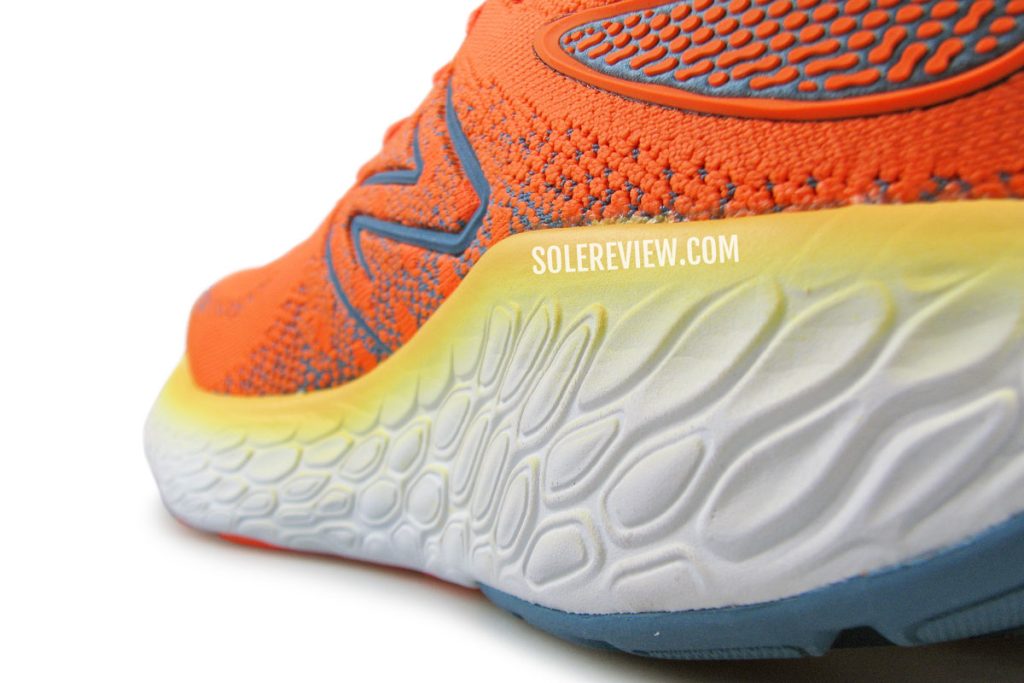
The inner midsole has concave-shaped hexagons for a higher level of support. The raised sidewalls also cup the foot on the sides.
Ever since its debut in 2014, the Fresh Foam midsole has always had sidewalls with hexagonal molding.
The inner and outer sidewalls were differentiated with concave and convex hexagons. The idea was to make the inner midsole more supportive by using filled-up (convex) hexagons, whereas the outer/lateral side had hollow molding.
The 1080 V12 does something similar. Its outer sidewalls have laser-cut holes to make them softer than the medial side.
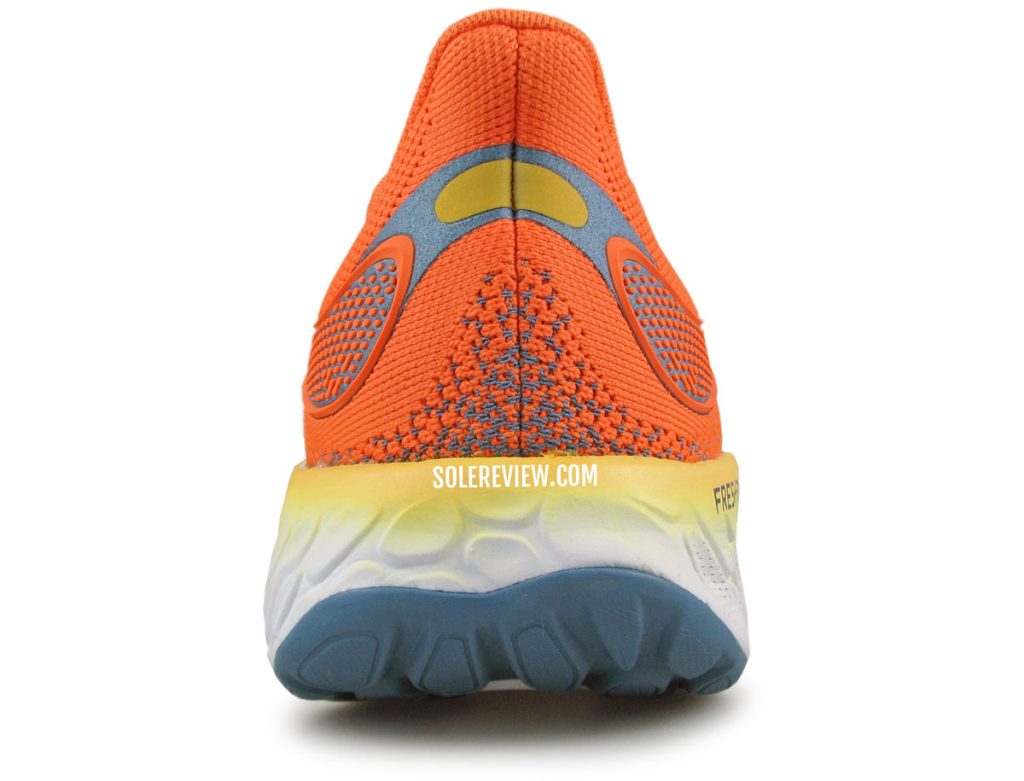
Despite the difference between the inner and outer midsole, the 1080V12 delivers a very neutral and supportive ride experience.
Nonetheless, it’s hard to tell the difference during a run. The 1080 V12, like the V11, delivers a neutral ride experience without any bias.
It’s also quite supportive; the rear midsole has raised sidewalls that form a cup around the foot. The wide forefoot midsole also flares outwards to form a planted base.
RECOMMENDED ROTATION
Following the discontinuation of the 1400V6 and 1500V6, New Balance doesn’t have a credible racing flat assortment.
For now, the New Balance Fuelcell Rebel V2 is the next best thing if you want a comfortable and lightweight speed shoe. That being said, there are plenty of low-profile racers if you explore other brands.
The adidas adizero adios 6 is an excellent racing shoe for short-distance races, and so is the affordable Asics Hyper Speed. We currently do not have an opinion of the Nike ZoomX Streakfly as we haven’t run in them yet.
For long-distance speed runs and races, it’s worth exploring the plate-assisted New Balance RC Elite V2 and Saucony Endorphin Speed 2 to rotate alongside the 1080V12.
IS THE NEW BALANCE 1080 V12 DURABLE?
A lifespan of 400 miles should be expected of the 1080 V12. The inherent stretch of the knit upper minimizes the chances of developing stress points, and the soft midsole sidewall poses a low risk of friction-induced damage.
The thick and densely-knit structure of the mesh also helps with durability.
The outsole rubber isn’t very thick, but its ability to retract inside the soft midsole slows down the wear and tear process.
The insole and Fresh Foam midsole have proven to be sufficiently durable over the last few years, so that’s not a potential area of concern.
THE UPPER DESIGN AND FIT
The New Balance 1080 V12 does not fit true to size. You should purchase a half size smaller than your actual running shoe size. To be specific, if your running shoe size is US 11, get a 10.5 for the 1080V12.
We suspect that the redesigned heel counter plays a part in the sizing update.
Unlike the V11’s heel cup which had a sharp inward-facing molding, the V12’s heel uses a foam-padded collar with a flared Achilles lip.
This change in design causes the foot to move closer to the heel by a few millimeters and further away from the front. The internal bumper also creates dedicated space inside the toe-box; there’s a healthy margin between the side of the large toe and the upper.
As a result, the 1080V12’s interiors fit longer than before. We’ve seen this happen in many running shoes that we’ve reviewed over the last decade, so it’s not a surprise.
The updated heel design doesn’t only impact the sizing; there’s a noticeable improvement in the quality of grip.
The 1080V11’s heel didn’t feel very secure, so we’re glad to see New Balance make much-needed improvements. The 1080 V12’s heel only not improves the grip, but also elevates the interior comfort.
From the outside, the midfoot and forefoot appear similar to the V11. However, the interior fit has changed – and mostly for the better.
One of the things we didn’t like about the V11 was its stiff midfoot panel. The area near the last two lacing rows had multiple layers of mesh and synthetic, and the result was a stiff component that needed time to break-in.
It’s worth pointing out that the stiffness was partially caused by the joint between the molded heel counter and midfoot panel. So good riddance, weird heel design.
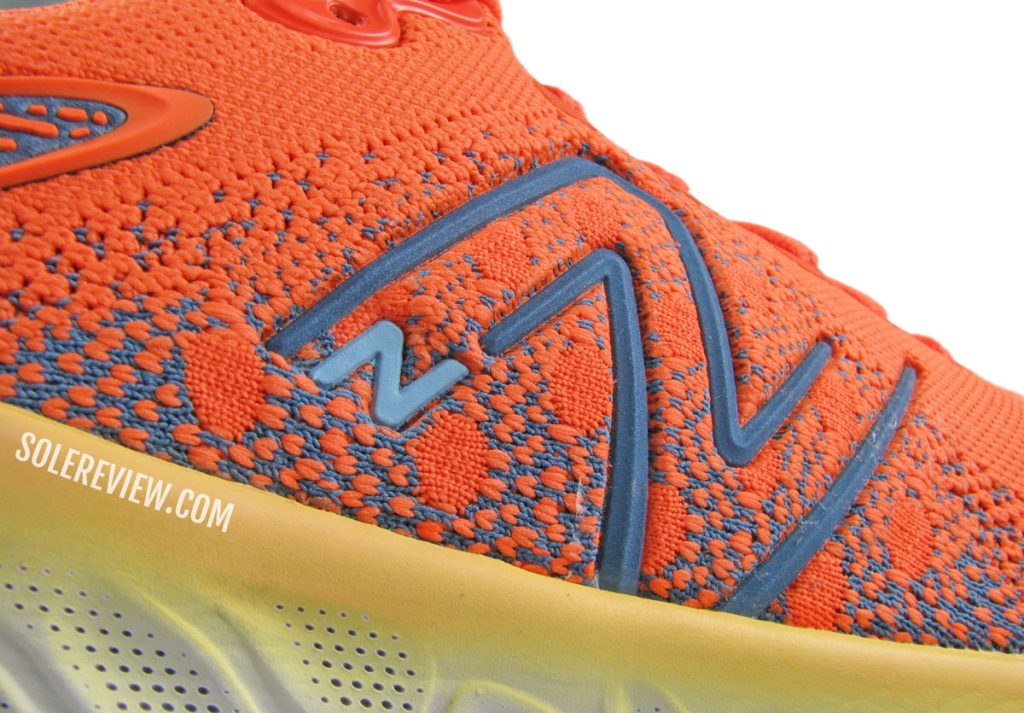
The molded – and reflective – logo provides structural support and aesthetic detail without adding stiffness.
With the heel weirdness gone, the 1080V12’s upper is much simpler. The entire upper is a one-piece mesh panel with different areas of stretch and densely-knit areas.
The elastic top of the forefoot creates a secure yet accommodating fit. The mesh that’s closer to the midsole edge has a tighter knit for support and durability.
In addition to the standard width, the New Balance 1080V12 also sells in a narrow, wide, and extra-wide sizing. And if you are a large-footed runner, also know that this shoe is sized till a US 16.
And just like the 1080V11, the upper doesn’t get a full tongue, but more like a 2/3rd length tongue. The first couple of lacing rows cinch over the stretchy upper mesh.
This was one of the reasons why the previous model’s forefoot was so comfortable, and it’s likewise for the V12.
The forefoot is stretchy yet extremely comfortable. The elastic mesh wraps the foot securely but never feels tight – and achieving that balance is harder than it sounds.
It does help that the tongue only employs a partial gusset rather than a full sleeve. The thin and elastic gusset prevents tongue slide without eating into interior space.
The 1080 has a conventional tongue design that doesn’t share the stretch properties of the knit mesh. The foam-quilted flap absorbs the pressure exerted by the flat (and semi-stretch) laces.
Though the toe-box isn’t shallow, the ceiling is flush with the big toe. This is a form-fitting upper with no margin between the foot and mesh exterior.
Consequently, the 1080V12 isn’t very good at keeping the feet cool during the summer months. It never gets uncomfortably warm, but the 1080 is no Fuelcell Rebel either. The 1080 V11 had an edge in ventilation due to the perforated mesh that was much thinner than what the V12 uses.
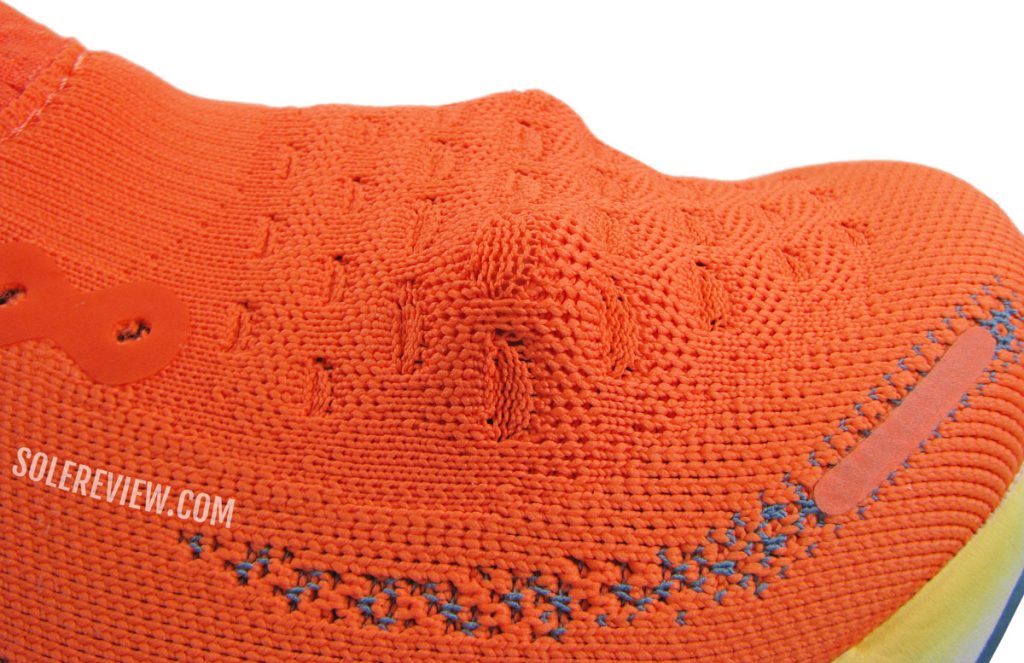
Only the top of the forefoot is noticeably elastic, whereas the lower sections are thick with minimal stretch. Wearing the shoe expands the mesh, and also the vents on the top.
We do like the ‘dynamic’ forefoot vent design, though. The vents on the stretchy mesh grow larger when the foot is inside the shoe.
But hey, we should stop nitpicking. The ‘Hypoknit’ upper is very comfortable – easily the best since we began reviewing the 1080 series. The half-size large fit is the only surprise that one needs to be mindful of.
For a running shoe with a knit upper, there’s an abundance of reflective trims.
Both the logos on the midfoot are reflective, and so are the small trims over the heel and forefoot. This makes the 1080 very visible during dawn or dusk.
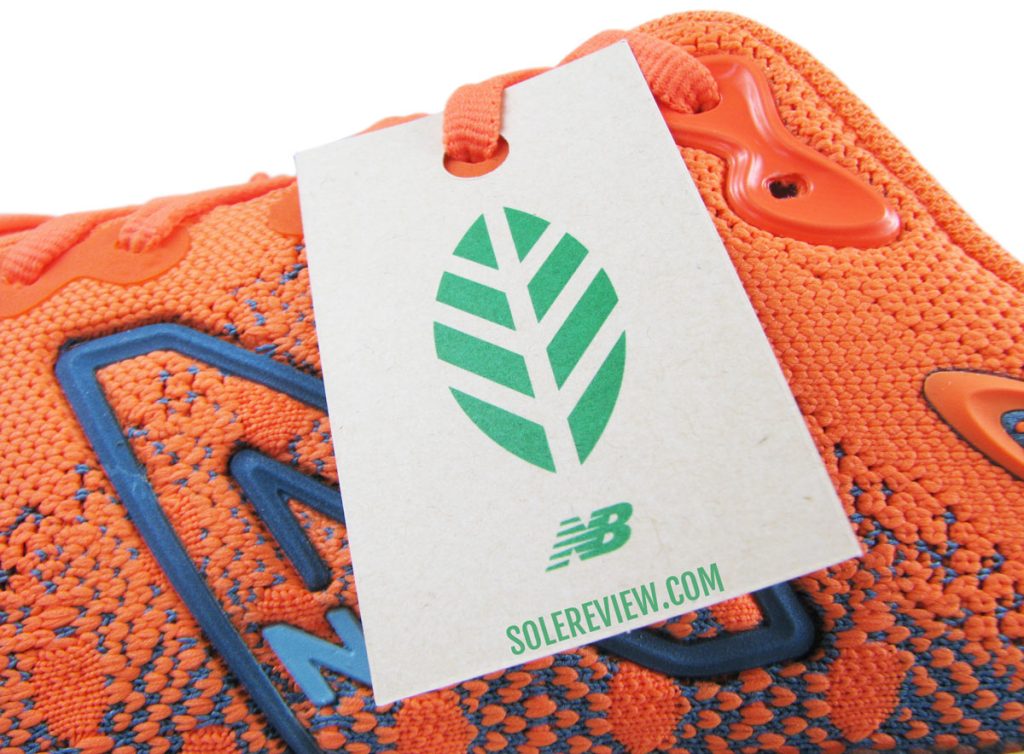
Like many running shoe brands, New Balance claims that the 1080 uses recycled and bio-based content. That’s what the ‘Green Leaf’ signifies.
New Balance claims that the 1080’s upper is made of 50% or more recycled content, and at least one midsole/outsole material contains 3% bio-based or 5% recycled content. The brand explains its sustainability approach on its website.
There’s a growing pressure on apparel brands to use environmentally-preferred manufacturing methods, so it’s good to see New Balance doing something about it.
PROS AND CONS
There’s a lot to like about the New Balance 1080V12, and very little to dislike.
One could argue that the $160 retail doesn’t make the 1080V12 a value proposition, as there are other tech-loaded shoes (like the Endorphin Speed and Nike Zoom Fly 4, for example) at the same price. But again, that’s very subjective, considering how well-rounded the 1080 is.
Though the Fresh Foam X midsole isn’t made of PEBA or any other super foam, it gets the job done, and then some. The 8 mm drop midsole has the levels of ride comfort required for high-mileage runs, and yet it doesn’t feel slow – courtesy of its rocker-shaped midsole geometry.
The stretchy knit upper is extremely comfortable – so much so that it’s even possible to go sock-less. The V12’s heel fit is an improvement over the V11, and the soft midfoot panel is superior to the V11’s stiff panels.
However, it runs warm because of the thick and elastic mesh that sits flush over the foot.
There’s plenty of reflectivity available for low-visibility running conditions – which has now become something of a rarity within the industry.
COMPARISON: THE NEW BALANCE 1080V12 VERSUS 880V12
Even though both the 1080 and 880 are members of New Balance’s neutral cushioning family, they maintain a healthy distance from a performance standpoint.
The dual-density 880 V12 doesn’t have the liveliness of the 1080, so the cushioning experience is ‘traditional’ and muted. The 10 mm offset midsole’s transition doesn’t have the roll-off quality that the 1080 possesses.
The $25 cheaper 880 has more of the conventional neutral trainer vibe, something that also reflects in its non-elastic upper and a lack of a tongue gusset.
SHOES SIMILAR TO THE NEW BALANCE FRESH FOAM 1080 V12
If this review was written a decade ago, premium neutral trainers like the New Balance 1080, Brooks Glycerin, Nike Vomero, and Asics Nimbus would have grouped in a single category.
That’s no longer the case. The neutral running shoe landscape has evolved, and so have the shoes within this category.
For example, it’s more productive to compare the lively New Balance 1080V12 with the Asics Novablast 2, Asics Nimbus Lite 3, or the Hoka Clifton 8 than the more traditional Brooks Glycerin 19.
The Novablast V2 is a cushioned neutral trainer with an 8 mm heel offset with a responsive ride. Like the 1080, its rocker-shaped midsole doesn’t struggle at 5 min/km (8 min/mile) paces. It’s $30 less expensive than the 1080, so it’s a serious alternative.
Next up is the Hoka Clifton 8 – a familiar running shoe with tempo-friendly ride comfort. The Asics Nimbus Lite 3 isn’t bad either, and it feels slightly peppier than the standard Nimbus 24.
And what of the recently launched Nike React Infinity Run 3? It has a cushioned React foam midsole, but its weak spot is the stiff heel stabilizer that creates a pressure spot under the arch. We’ll spend time discussing the finer points of the Infinity 3 in our upcoming review.
Sure, you can also explore options like the Brooks Glycerin 20 or Saucony Triumph 19. That being said, those running shoes deliver a conventional neutral running experience instead of the 1080’s nimble ride quality.
Do you own this shoe? Improve this review by sharing your insights – submit a review here.

